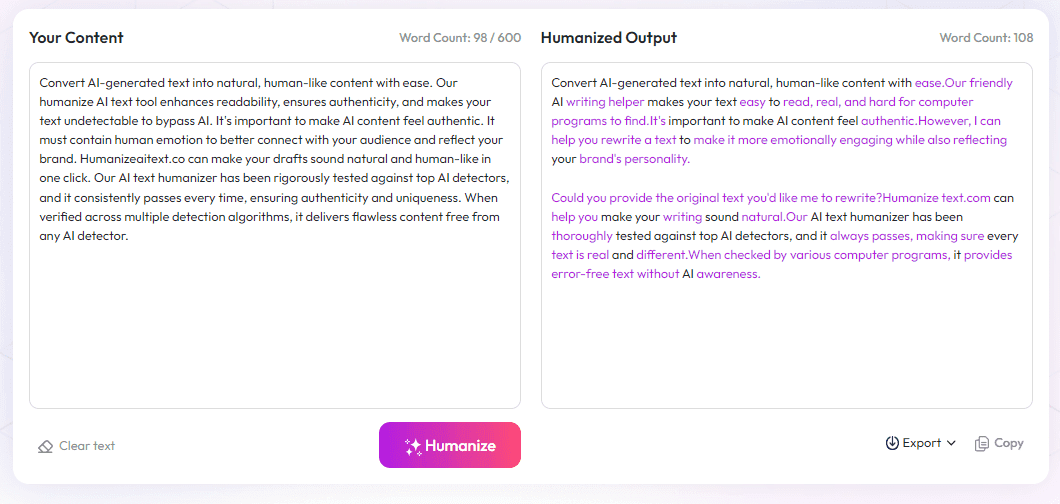Table of Contents
Many people worry about the environmental impact of printing and paper choices. It's a real concern, especially when it's easy to overlook greener options that can make a difference. If you're looking for ways to be kinder to the planet through your publishing habits, you're in the right place.
Keep reading, and you'll see simple options for sustainable paper that still give your work a great look. You don't have to sacrifice quality or style to make eco-friendly choices — there's plenty of good stuff out there.
In the next few lines, I'll share some popular sustainable paper options so you can pick what works best for your projects without the guilt.
Key Takeaways
Key Takeaways
- Choosing sustainable paper options like recycled, FSC-certified, or plant-based materials helps reduce the environmental impact of publishing without sacrificing quality or style.
- Recycled paper uses waste material to lower resource use, while FSC-certified paper ensures forests are managed responsibly. Combining these offers eco-friendly, high-quality choices.
- Materials like bamboo, hemp, and agricultural waste grow quickly and need fewer resources, making them good alternatives to traditional paper and supporting sustainability.
- Manufacturing processes matter—look for papers made with low emissions, eco-friendly inks, and renewable energy to maximize environmental benefits.
- Certifications such as FSC, PEFC, and SFI serve as quick proof of responsible sourcing—always verify their validity to ensure eco-conscious choices.
- Shifting to digital publishing reduces paper consumption, lowers carbon footprints, and can save costs, especially through print-on-demand options.
- Start small by auditing your current materials, partnering with eco-friendly suppliers, and setting goals to increase recycled content and reduce overall paper use.

Sustainable Publishing Paper Options
When it comes to environmentally friendly publishing, the choice of paper is one of the most impactful decisions a publisher can make. Sustainable publishing paper options focus on minimizing environmental harm while maintaining quality. The most popular options include recycled paper, FSC-certified paper, FSC+Recycled blends, and plant-based or alternative materials.
Recycled paper is created from post-consumer waste, reducing the need for virgin timber. This option can be made using pre- or post-consumer content, with post-consumer recycled paper typically having a lower environmental footprint. It’s widely used because it supports waste reduction and promotes circularity.
FSC-certified paper (Forest Stewardship Council) guarantees that the fiber comes from responsibly managed forests. FSC certification ensures that forests are harvested sustainably, protecting biodiversity and indigenous rights. Many publishers opt for FSC-certified paper to align with ethical sourcing standards.
Some publishers combine these approaches by using FSC+Recycled blends. This mix leverages recycled content while guaranteeing responsible forest management, offering a balanced, eco-conscious option for high-quality printing.
Looking for a greener way to publish? Digital-first strategies are also gaining traction, with many publishers reducing paper use altogether. But for print publications, selecting the right sustainable paper makes a real difference. Check out comprehensive lists and certifications on sites like FSC.org for guidance on eco-friendly materials.
Another eco-conscious choice involves opting for plant-based or alternative materials. For example, some companies now offer paper made from agricultural waste, Bamboo, or even hemp, which grow quickly and require fewer resources than traditional trees.
Beyond material choice, consider the environmental impact of manufacturing processes. Look for papers produced with minimal emissions and eco-friendly inks, such as soy-based inks, which are less toxic than traditional petroleum-based inks.
Choosing sustainable papers is a practical step toward reducing your publishing footprint, and many suppliers now offer transparent data on the environmental benefits of their products. For instance, reports show that switching to recycled paper can cut greenhouse gas emissions considerably compared to virgin paper production.
To stay well-informed, industry reports from organizations like the UK Publishers Association and market research firms can provide valuable data on the latest sustainable paper trends and certifications. So, next time you plan a print run, consider these eco-friendly options not just as a trend but as a responsible choice that helps preserve the planet.

Alternative and Plant-Based Paper Materials
Switching to plant-based papers can make a big difference, especially since crops like bamboo, hemp, and agricultural waste grow quickly and require less water and fewer resources than traditional trees.
These materials also tend to produce lower greenhouse gas emissions during manufacturing.
For example, bamboo grows rapidly and can be harvested sustainably within five to seven years, unlike hardwood trees that can take decades.
Hemp is another fast-growing crop that produces strong, high-quality fiber suitable for printing and packaging.
Agricultural waste, such as wheat straw or corn stalks, can be transformed into paper products, reducing waste and reliance on virgin forest resources.
Choosing these alternatives helps publishers reduce their carbon footprints and promote a circular economy.
Look for suppliers who specialize in these materials, and ask about certification standards like FSC or PEFC to ensure responsible sourcing.
Some companies also offer paper made from seaweed or other innovative sources, which can further cut environmental impact.
Overall, integrating plant-based materials into your publishing process supports sustainability and can even offer cost benefits in the long run.
Impact of Manufacturing Processes on Sustainability
The way paper is made plays a critical role in its eco-friendliness.
Look for papers produced with low emissions and eco-efficient methods, such as mechanical or chlorine-free bleaching processes.
Manufacturers that use renewable energy sources, like solar or wind power, help reduce their carbon footprint.
Eco-friendly inks, especially soy-based or vegetable inks, are less toxic and easier to recycle, adding to the paper's sustainability credentials.
Some paper mills implement water-saving techniques, recycle wastewater, and minimize waste, making the entire process greener.
Choosing papers from suppliers that transparently share manufacturing data shows a commitment to environmental responsibility.
Switching to digital printing methods can also cut waste and reduce energy use compared to traditional offset printing.
Being aware of these manufacturing practices can help publishers make more informed choices that align with their sustainability goals.
Certifications to Look For When Choosing Sustainable Paper
When shopping for eco-friendly paper, certifications can serve as a quick trust signal.
The most recognized is the Forest Stewardship Council (FSC), which ensures responsible forest management.
Program for the Endorsement of Forest Certification (PEFC) is another certification that verifies sustainable sourcing.
Look for papers with the Sustainable Forestry Initiative (SFI) label, especially if you want certified forest products from North America.
Some papers also carry Environmental Product Declarations (EPDs), providing transparent lifecycle environmental impact data.
By choosing certified papers, publishers demonstrate their commitment to responsible sourcing and environmental ethics.
Always verify the certification's validity through official websites like FSC.org or PEFC.
Using certified materials aligns your brand with sustainability standards and appeals to eco-conscious readers.
How Digital-First Strategies Reduce Paper Use
Moving more resources to digital formats cuts down on the need for physical paper and inks.
By prioritizing online content, e-books, and digital journals, publishers lower their environmental impact significantly.
For instance, a study shows that each physical book release contributes roughly 4,900 grams of CO2e during manufacturing—digital editions skip that step altogether.
Adopting a digital-first approach can also save costs on printing, storage, and distribution.
While print still has its place, especially for collectors or certain markets, shifting to digital wherever possible makes a lot of sense for sustainability-minded publishers.
Platforms like Kindle Direct Publishing or issue-based digital magazines are practical ways to reach audiences with less environmental impact.
And for printed editions that are necessary, consider print-on-demand publishing to avoid overproduction and waste.
Steps to Implement Sustainable Paper Choices in Your Publishing Workflow
Start by conducting an audit of your current materials and processes to identify areas for improvement.
Research and partner with suppliers that prioritize recycled, FSC-certified, or plant-based papers.
Create a list of preferred materials and request samples to assess print quality and environmental claims.
Train your team on the importance of sustainability to ensure everyone is aligned with eco-conscious decisions.
Set clear goals and metrics for reducing paper usage and increasing recycled content over time.
Incorporate eco-labels and certifications into your branding to communicate your sustainability efforts to customers.
When planning your next print run, opt for digital proofs or samples to minimize waste.
Lastly, keep up with industry trends and certifications by following organizations like UKPA and integrating new innovations as they emerge.
FAQs
Sustainable paper options include recycled paper, FSC-certified paper, and paper derived from responsibly managed forests. These choices reduce environmental impact and support eco-friendly practices in publishing.
Choosing eco-friendly papers helps reduce deforestation, lowers carbon footprint, and promotes sustainable resource use, making publishing more environmentally responsible and supporting conservation efforts.
Yes, many recycled papers are designed to meet high-quality printing standards, providing sharp images and clear text while supporting sustainability goals.
Publishers can look for certifications like FSC or PEFC, select recycled content, and work with suppliers committed to sustainable harvesting and responsible manufacturing practices.



